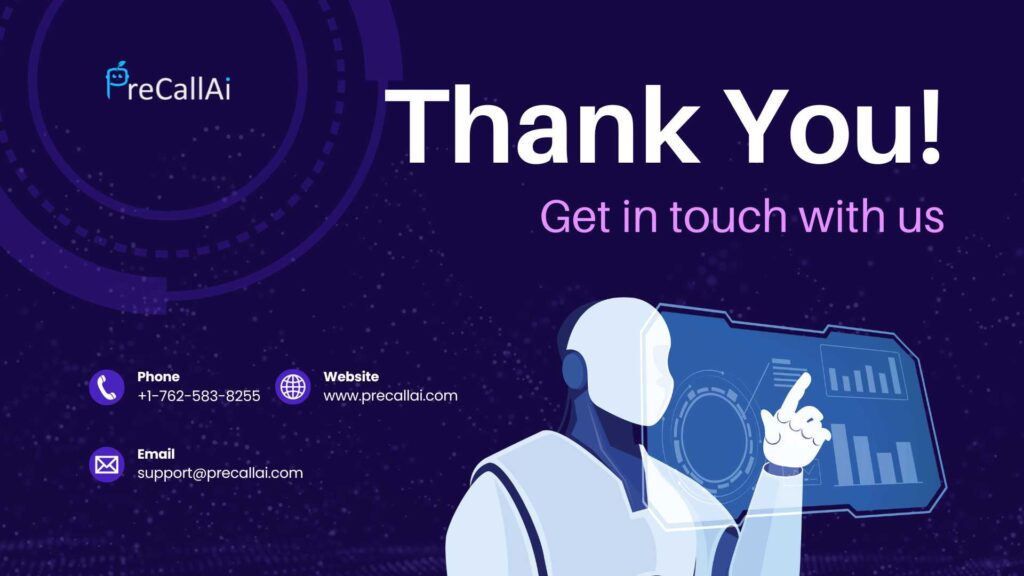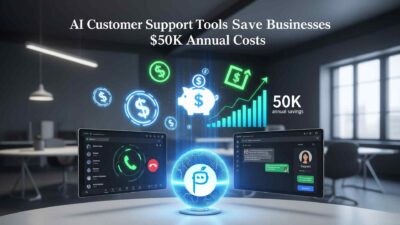TL;DR Call overflow management automation transforms how businesses handle high-volume customer communications during peak periods. Modern companies face increasing challenges when call volumes exceed their capacity to respond effectively. Smart businesses implement automated solutions to manage overflow situations without losing valuable customer opportunities. Call overflow management automation ensures every customer receives prompt attention regardless of timing. Companies utilizing advanced voice AI systems report significant improvements in customer satisfaction and operational efficiency.
Table of Contents
Today’s competitive marketplace demands instant customer service availability across all communication channels. Organizations struggling with overflow situations risk losing customers to more responsive competitors. Call overflow management automation provides the technological foundation for handling unlimited call volumes seamlessly. Businesses implementing these solutions maintain consistent service quality during unexpected demand spikes. Professional voice AI systems like PreCallAI enable companies to scale their communication capacity without proportional staffing increases.
The evolution of customer expectations requires businesses to rethink traditional overflow handling approaches completely. Manual overflow management methods create bottlenecks that frustrate customers and overwhelm staff members. Call overflow management automation eliminates these limitations through intelligent routing and automated response capabilities. Companies achieve better customer experiences while reducing operational stress on human agents. Advanced automation platforms provide comprehensive solutions for managing complex overflow scenarios effectively.
Understanding Call Overflow Management Automation
Call overflow occurs when incoming call volume exceeds available agent capacity during specific time periods. Traditional call centers experience significant challenges during peak hours, holidays, and promotional campaigns. Manual overflow handling often results in long wait times, abandoned calls, and frustrated customers. Call overflow management automation addresses these issues through intelligent technology solutions. Modern systems automatically route calls, provide instant responses, and maintain consistent service quality.
Abandoned call rates decreased to 4.3%, customer satisfaction scores improved by 28 percentage points, and sales conversion from service calls increased by 17% when companies implemented effective overflow management systems. These impressive results demonstrate the tangible benefits of automated overflow handling. Call overflow management automation delivers measurable improvements in key performance metrics across organizations.
The complexity of modern business communications requires sophisticated overflow management strategies. Peak periods can increase call volumes by 200-400% above normal capacity levels. Traditional staffing approaches cannot cost-effectively handle these dramatic fluctuations in demand. Call overflow management automation provides scalable solutions that adapt to varying call volumes automatically. Businesses maintain service quality consistency regardless of external demand pressures.
Key Components of Automated Overflow Systems
Intelligent call routing represents the foundation of effective overflow management automation systems. Advanced algorithms analyze caller information, agent availability, and urgency levels simultaneously. Call overflow management automation systems prioritize calls based on customer value, issue complexity, and wait time factors. Real-time decision-making ensures optimal resource allocation during high-demand periods. Automated routing reduces average handling times while improving first-call resolution rates.
Voice AI integration enhances overflow management by providing immediate customer assistance and information. Automated systems handle routine inquiries, appointment scheduling, and basic problem-solving independently. Call overflow management automation frees human agents to focus on complex issues requiring personal attention. Customers receive instant responses to common questions without waiting for available agents. Advanced voice recognition technology enables natural conversation flows between customers and automated systems.
Predictive analytics capabilities help businesses anticipate overflow situations before they occur. Historical data analysis identifies patterns in call volume fluctuations across different time periods. Call overflow management automation systems prepare resources and staffing adjustments based on predictive insights. Proactive management prevents overflow situations rather than simply reacting to them. Companies reduce emergency staffing costs while maintaining consistent service levels.
Benefits of Call Overflow Management Automation
Industry analysis from Frost & Sullivan projects these innovations will increase overflow service efficiency by 32% while improving customer satisfaction by 27% over the next three years. These projected improvements highlight the significant advantages of implementing automated overflow management solutions. Call overflow management automation delivers both immediate and long-term benefits for business operations.
Customer satisfaction improvements represent the most visible benefit of automated overflow management systems. Reduced wait times, consistent service quality, and 24/7 availability enhance the overall customer experience. Call overflow management automation ensures customers receive prompt attention regardless of call volume fluctuations. Businesses report higher customer retention rates following implementation of automated overflow solutions. Positive customer experiences translate directly into increased revenue and brand loyalty.
Operational cost reductions provide compelling financial justification for overflow management automation investments. Automated systems handle multiple calls simultaneously without additional labor costs. Call overflow management automation reduces the need for expensive emergency staffing during peak periods. Companies eliminate overtime expenses while maintaining service quality standards consistently. Resource optimization through automation delivers sustainable cost savings over time.
Improved Agent Productivity and Satisfaction
Engaged, satisfied contact centre employees are 8.5 times more likely to stay than leave in 12 months, and 16 times more likely to recommend your brand to friends. This statistic demonstrates how automation positively impacts employee satisfaction and retention rates. Call overflow management automation reduces stress on human agents during high-volume periods. Automated systems handle routine tasks, allowing agents to focus on meaningful customer interactions.
Agent burnout significantly decreases when overflow situations are managed through automated systems effectively. Human agents experience less pressure and frustration during peak call periods. Call overflow management automation provides agents with better tools and information for resolving customer issues. Improved working conditions lead to higher job satisfaction and reduced turnover rates. Companies invest less in training replacement staff when retention improves through automation.
Quality consistency becomes achievable when automated systems handle overflow situations according to predetermined protocols. Human agents maintain performance standards without rushing through customer interactions. Call overflow management automation ensures every customer receives appropriate attention and service quality. Consistent experiences build customer trust and improve brand reputation over time. Quality metrics improve across all customer communication channels through systematic automation.
Revenue Protection and Growth Opportunities
Lost revenue from missed calls and abandoned customers represents a significant business risk during overflow periods. Every unanswered call potentially costs companies future sales and customer relationships. Call overflow management automation captures all incoming opportunities through intelligent routing and automated responses. Businesses protect revenue by ensuring no customer inquiry goes unaddressed during peak periods. Automated systems convert more inquiries into sales through consistent follow-up and information delivery.
Sales conversion rates improve when customers receive immediate attention and accurate information. Automated systems provide product details, pricing information, and availability instantly. Call overflow management automation maintains sales momentum during high-demand periods without additional staffing. Companies capture opportunities that would otherwise be lost to competitor response delays. Revenue growth accelerates when automation enables businesses to handle unlimited customer inquiries.
Cross-selling and upselling opportunities increase when automated systems provide comprehensive customer information. Voice AI platforms access customer history, preferences, and purchase patterns instantly. Call overflow management automation enables personalized recommendations based on individual customer profiles. Automated systems identify sales opportunities that human agents might miss during busy periods. Revenue per customer increases through systematic identification and presentation of relevant offers.
Implementation Strategies for Call Overflow Management Automation
Successful automation implementation requires careful planning and systematic execution across multiple phases. Companies must assess current overflow challenges, define objectives, and select appropriate technology solutions. Call overflow management automation projects succeed when businesses align technology capabilities with specific operational requirements. Implementation timelines typically range from 3-6 months depending on system complexity and integration needs. Proper planning ensures smooth transitions without disrupting existing customer service operations.
Technology integration represents a critical factor in automation implementation success rates. Existing phone systems, customer databases, and communication platforms must connect seamlessly with overflow management solutions. Call overflow management automation requires compatibility with current infrastructure to maximize implementation benefits. Companies should evaluate integration capabilities before selecting specific automation platforms. Professional implementation services help ensure proper system configuration and data migration.
Staff training programs prepare employees for working effectively with automated overflow management systems. Human agents learn to collaborate with AI systems rather than compete against automation. Call overflow management automation requires new skills and workflows that employees must master gradually. Training programs should address both technical operation and customer interaction best practices. Successful implementation depends on employee acceptance and effective utilization of automated capabilities.
Technology Selection Criteria
Scalability requirements influence technology selection decisions for overflow management automation systems. Growing businesses need platforms that expand capacity without requiring complete system replacements. Call overflow management automation solutions should handle increasing call volumes through simple configuration adjustments. Cloud-based platforms typically offer better scalability than on-premises solutions. Companies should evaluate future growth projections when selecting automation technology.
Integration capabilities determine how effectively automation systems connect with existing business applications. CRM systems, helpdesk platforms, and communication tools must share data seamlessly. Call overflow management automation requires access to customer information, order history, and support tickets. API availability and compatibility standards affect integration complexity and costs. Businesses should prioritize platforms with comprehensive integration capabilities.
Customization options allow businesses to tailor automation systems to specific industry and operational requirements. Standard automation solutions may not address unique business processes and customer needs. Call overflow management automation should adapt to existing workflows rather than forcing operational changes. Configurable routing rules, response templates, and escalation procedures provide necessary flexibility. Companies with specialized requirements need highly customizable automation platforms.
Tools and Technologies for Call Overflow Management Automation
Automatic Call Distribution systems form the foundation of modern overflow management automation solutions. These systems intelligently route incoming calls based on agent availability, skills, and customer requirements. Call overflow management automation relies on sophisticated ACD capabilities to optimize resource utilization. Advanced systems consider historical performance data when making routing decisions. Real-time monitoring ensures optimal call distribution throughout varying demand periods.
Interactive Voice Response technology provides immediate customer assistance while determining appropriate routing destinations. Modern IVR systems use natural language processing to understand customer requests accurately. Call overflow management automation integrates IVR capabilities to handle routine inquiries without agent intervention. Voice recognition technology enables customers to describe problems using natural speech patterns. Advanced IVR systems resolve simple issues completely while escalating complex problems to human agents.
Customer Relationship Management integration enables automated systems to access comprehensive customer information instantly. CRM connectivity provides voice AI systems with account history, preferences, and previous interaction details. Call overflow management automation becomes more effective when systems understand individual customer contexts. Personalized responses improve customer satisfaction while reducing resolution times significantly. Integrated CRM data enables automated systems to provide informed recommendations and solutions.
Voice AI and Conversational Technologies
Natural Language Processing capabilities enable automated systems to understand and respond to customer inquiries naturally. Modern voice AI platforms interpret complex requests and provide appropriate responses or routing decisions. Call overflow management automation benefits from sophisticated NLP that handles multiple languages and accents. Conversational AI maintains context throughout extended customer interactions effectively. Advanced systems learn from each interaction to improve future response accuracy and relevance.
Machine Learning algorithms continuously improve overflow management automation performance through data analysis and pattern recognition. These systems identify optimal routing strategies based on historical success rates and outcomes. Call overflow management automation becomes more effective over time as algorithms learn from customer interactions. Predictive capabilities help systems anticipate customer needs and preferences proactively. Automated systems adapt to changing business requirements without manual reprogramming.
Speech Analytics provide insights into customer satisfaction, agent performance, and system effectiveness. Real-time analysis identifies emotional indicators that influence routing and escalation decisions. Call overflow management automation benefits from sentiment analysis that detects frustrated or urgent customers. Analytics platforms generate detailed reports about system performance and customer experience metrics. Data-driven insights enable continuous optimization of automated overflow management strategies.
Real-Time Monitoring and Analytics
Performance dashboards provide real-time visibility into overflow management automation system effectiveness and customer experience metrics. Managers monitor call volumes, wait times, resolution rates, and customer satisfaction scores continuously. Call overflow management automation requires active monitoring to ensure optimal performance during varying demand periods. Visual dashboards highlight trends and potential issues before they impact customer service quality. Real-time data enables quick adjustments to routing rules and resource allocation.
Predictive analytics identify potential overflow situations before they occur based on historical patterns and current trends. Advanced systems analyze seasonal variations, promotional campaigns, and external factors affecting call volumes. Call overflow management automation becomes proactive rather than reactive through predictive capabilities. Early warning systems alert managers to prepare additional resources or adjust automation settings. Predictive insights reduce the frequency and severity of overflow situations.
Quality assurance monitoring ensures automated systems maintain service standards and customer satisfaction levels. Automated monitoring reviews random interactions for compliance with established protocols and quality metrics. Call overflow management automation includes quality control mechanisms that identify training needs and system improvements. Customer feedback integration provides direct insights into automated system performance from user perspectives. Continuous quality monitoring maintains high service standards across all customer interactions.
Measuring Success in Call Overflow Management Automation
Key Performance Indicators provide objective measures of overflow management automation effectiveness and customer impact. Average wait times, call abandonment rates, and first-call resolution percentages indicate system performance. Call overflow management automation success requires tracking multiple metrics to understand complete operational impact. Customer satisfaction scores provide direct feedback about automated system effectiveness. Revenue metrics demonstrate the financial benefits of implementing overflow management automation.
73% of contact centers report increased uptime in their operations and 43% savings on expenses when implementing cloud-based automation solutions. These statistics highlight the operational benefits achieved through systematic overflow management automation. Companies measure cost reductions, efficiency improvements, and customer satisfaction enhancements. Comprehensive metrics provide clear evidence of automation investment returns.
Customer retention rates often improve following successful overflow management automation implementation. Businesses track customer lifetime value, repeat purchase rates, and referral generation. Call overflow management automation contributes to long-term customer relationships through consistent service quality. Loyalty metrics demonstrate the sustained benefits of automated overflow handling. Revenue growth from retained customers justifies automation investments over time.
ROI Calculation Methods
Cost analysis compares pre-automation expenses with post-implementation operational costs across multiple categories. Labor costs, infrastructure expenses, and customer acquisition costs provide baseline measurements. Call overflow management automation typically reduces operational expenses while maintaining or improving service quality. Implementation costs should be amortized over multiple years to calculate accurate returns. Comprehensive cost analysis includes both direct and indirect benefits from automation.
Revenue impact measurement includes increased sales conversion, customer retention, and upselling opportunities. Automated systems often identify revenue opportunities that manual processes miss during busy periods. Call overflow management automation protects existing revenue while enabling growth through improved capacity. Companies track revenue per call, conversion rates, and average transaction values. Revenue growth often exceeds cost savings as the primary benefit of overflow automation.
Operational efficiency gains provide additional value through improved resource utilization and agent productivity. Automated systems handle more interactions with fewer resources while maintaining quality standards. Call overflow management automation enables businesses to serve more customers without proportional cost increases. Efficiency metrics include calls per agent, resolution times, and capacity utilization rates. Productivity improvements compound over time as systems learn and optimize automatically.
Industry-Specific Applications of Call Overflow Management Automation
Healthcare organizations utilize overflow management automation to handle appointment scheduling, prescription refills, and patient inquiries. Medical facilities experience predictable overflow patterns during flu seasons and after-hours periods. Call overflow management automation ensures patients receive timely responses to health-related questions. Automated systems can triage calls based on urgency levels and medical requirements. Healthcare providers maintain compliance with regulations while improving patient access to services.
Financial services companies implement overflow automation for account inquiries, loan applications, and fraud reporting. Banks and credit unions experience high call volumes during market volatility and economic events. Call overflow management automation provides secure handling of sensitive financial information. Automated systems can verify customer identities and provide account balances instantly. Financial institutions maintain security standards while improving customer service availability.
E-commerce businesses rely on overflow automation during sales events, product launches, and holiday seasons. Online retailers experience dramatic call volume increases during promotional periods. Call overflow management automation handles order inquiries, shipping updates, and return requests efficiently. Automated systems access inventory and order management systems to provide real-time information. Retail companies maintain customer satisfaction during high-demand periods without extensive staffing increases.
Small Business Implementation Benefits
Small businesses gain competitive advantages through overflow management automation that previously required enterprise-level resources. Limited staffing makes overflow situations particularly challenging for smaller organizations. Call overflow management automation enables small companies to provide large-enterprise service levels. Affordable cloud-based solutions make advanced automation accessible to businesses with limited budgets. Small businesses can compete effectively with larger competitors through superior customer service automation.
Cost efficiency becomes critical for small businesses implementing overflow management automation solutions. Limited resources require careful selection of automation platforms with favorable pricing models. Call overflow management automation provides excellent returns on investment for businesses with high customer inquiry volumes. Small companies can eliminate the need for additional staff while improving service quality. Automation levels the playing field between small businesses and larger competitors.
Professional image enhancement results from consistent, high-quality customer service provided through automation. Small businesses often struggle to maintain professional standards during busy periods. Call overflow management automation ensures every customer receives prompt, knowledgeable assistance. Automated systems provide comprehensive information without the limitations of small staff knowledge bases. Professional automation helps small businesses build credibility and customer trust.
Sync PreCallAI in minutes and supercharge your workflows
Future Trends in Call Overflow Management Automation

Artificial Intelligence capabilities continue advancing to provide more sophisticated overflow management automation solutions. Machine learning algorithms become more accurate at predicting call volumes and customer needs. Call overflow management automation will incorporate advanced emotional intelligence and context awareness. AI systems will provide increasingly personalized customer experiences through deeper data analysis. Future automation platforms will seamlessly integrate multiple communication channels and touchpoints.
Integration with emerging technologies like Internet of Things devices will expand overflow management automation capabilities. Smart home devices, wearables, and connected vehicles will generate new communication channels requiring overflow handling. Call overflow management automation will adapt to manage multimedia interactions including video, text, and voice simultaneously. Cross-platform integration will provide consistent customer experiences across all digital touchpoints. Advanced automation will anticipate customer needs before they initiate contact.
Regulatory compliance features will become increasingly important in overflow management automation systems. Privacy regulations and industry standards require sophisticated data handling and consent management. Call overflow management automation must adapt to changing regulatory requirements across different industries and regions. Automated compliance monitoring will ensure customer interactions meet legal and ethical standards. Future systems will provide comprehensive audit trails and reporting capabilities for regulatory purposes.






[…] Read More: How Does Call Overflow Management Automation Actually Help […]